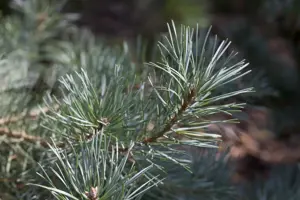Corylus avel. 'Medusa' - 30-40 CM C2
Corylus avel. 'Medusa' - 30-40 CM C2
Description
The Haselnuss 'Medusa' (Corylus avellana) is an upright, compact garden plant that produces yellow flowers arranged in catkins. They appear from March to April. Brown nuts emerge from these from September. The Haselnuss 'Medusa' also has roundish, medium green leaves. Its bark is brown and smooth. In a sunny to semi-shady location with well-drained, nutrient-rich, moist to wet soil, it usually reaches a height of around 2 metres.
Bulletpoints
* the flowers are heavily favoured by bees, bumblebees and hoverflies
* attractive orange-yellow autumn colouring
* suitable for containers
* tolerates pruning
* tolerates shade
Leaves
The deciduous leaves of the Haselnuss 'Medusa' are medium green, roundish, alternate, serrated. They are about 6 - 10 cm in size. Haselnuss 'Medusa' is bright orange-yellow in autumn.
Bark
Brown, smooth bark makes this plant an eye-catcher in any garden.
Spread
Europe to western Asia.
Frost hardiness
The Haselnuss 'Medusa' has good frost hardiness.
Growth
Haselnuss 'Medusa' is upright and compact in structure.
Water
The plant has a medium water requirement.
Pruning
This plant is tolerant of pruning.
Location
Preferred location in a sunny to semi-shady position.
Soil
Standard container plant soil.
Normal soil.
Planting time
Container plants can be planted all year round, except when the ground is frozen and in summer heat (over 30°C).
Flower
The yellow flowers of Haselnuss 'Medusa' appear in catkins from March to April.
Fruit
Corylus avellana 'Medusa' forms brown nuts with an aromatic, nutty flavour. Ripening time from September.
Use
Tub, solitary, ornamental shrub, rock garden, bee pasture
Shoots
The shoots of Corylus avellana 'Medusa' are twisted.
Root
Corylus avellana 'Medusa' is a shallow-rooted plant and, depending on the soil, forms spreading, finely branched roots.
- Article number8
-
EAN codeCOAMEDUS-2030040C2
- Latin nameCorylus avel. 'Medusa'
- catalogLandscape shop


